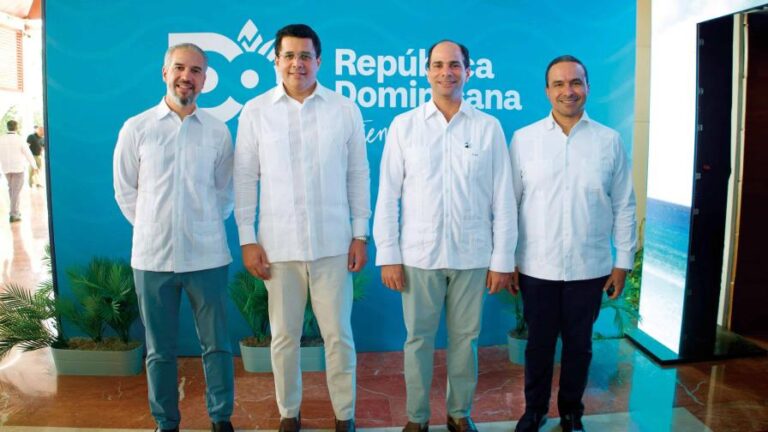The Dominican mining industry accounts for 2.1% of the gross domestic product (GDP), that is, about RD $ 189 billion, and has an exploitable potential that could facilitate access to new economic resources if projects that have applied to explore deposits are approved.
According to the director of Mining, Rolando Muñoz Mejía, these contributions come from three types of mining in the country: metallic, small scale, and non-metallic.
He stressed that metal mining accounts for the largest export amounts and economic contributions to the treasury, which represents a great boost for the nation’s finances and the development of the areas where it is carried out.
However, in the first 11 months of 2022, mining activity presented a negative variation of -8.3%, reflecting a lower production of gold and silver, associated with the decrease in the level of concentration of the mineral in the extractions carried out, according to the Central Bank in a preliminary report on the economy, noting that a project is currently underway to extend the useful life of the Pueblo Viejo mine up to the year 2044, where only the corresponding permits are pending.
The dynamism of this activity is such that in the provinces near Monseñor Nouel, capital of metal mining in the country, more than 4,000 direct jobs and 25,000 indirect jobs are generated.
Such is the case of Juan Sánchez, an employee in the mining sector with three years of experience, who says that the sector is an important source of income, both in terms of salary and in access to employment.
“In a rural area like this in the country no private employee who earns 55,000 pesos a month,” he said, indicating that this is the average salary of an operator.
Contributions to the sector
The acquired value of mining resources in the international market has favored local sales in recent years, said Muñoz Mejía, recalling that exactly during the pandemic mining was one of the most resilient sectors in the country and that the differential in income generated by the increase in the price of gold allowed the purchase of the Covid-19 vaccine.
The official explained that, in the past year, more than 2,250 million dollars were exported. Of that amount, the company Barrick Gold exported 1,650 million dollars, Falconbridge Dominicana another 480 million dollars and Corporación Minera Dominicana a total of 200 million dollars.
There are several mining deposits throughout the country, making it the second largest gold deposit in America. It also has significant reserves of silver, nickel, bauxite, marble, limestone and granite. Amber and larimar, semi-precious stones used in jewelry design, are also mined.
Other resources
Other very valuable metals are found in provinces such as Barahona, which has sodium carbonate and limestone, salt, gypsum and Larimar; Azua, has gypsum, marble, calcium carbonate and limestone; Samaná, with marble and granite; Puerto Plata, with amber, and Dajabón, with limestone and granite. These resources allow non-metallic mining, which drives development, Muñoz Mejía understands, noting that there are six cement factories in the country.
“This industry represents a great contribution for the country to attract foreign investment in the hotel sector, due to the ease of access to affordable materials,” he said.
Non-metallic industry
The cement industry contributed 43,000 million pesos to the Dominican economy during the year 2021, representing 0.8% of the gross domestic product (GDP), said the Dominican Association of Portland Cement Producers when presenting the study ‘Impact of the cement industry on the Dominican economy’, which highlights the tax contribution of cement companies to the State, which reached 8,149 million pesos, an amount similar to those contributed in other years.
Projects
3,400 million in investment. They are scheduled to extend the life of existing mines and projects through 2024.
Resources
—1— Report
Study indicates that one of the largest mineral reserves in the world lies between the Dominican Republic and Haiti.
—2— Deposit
For 2021, Dominican cement exports to Caribbean countries reached US$70,896,873, for an increase of 22.3%, when compared to the figures of the previous year.
—3— Sales
The main export destination of Dominican cement was Haiti, with US$49,541,354, being 70% of all sales recorded by cement producing companies, followed by Jamaica, with imports of US$10,384,058.
Source:
El Día

